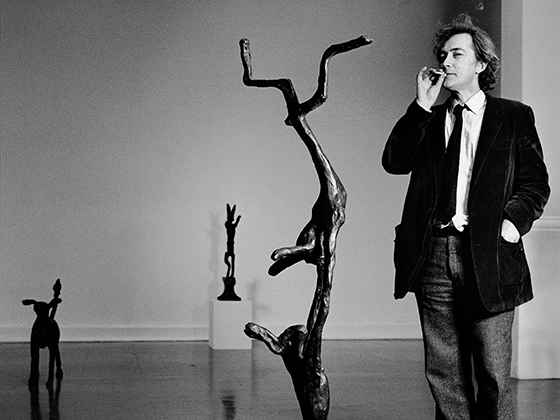Barry Flanagan, famed for his distinctive long-limbed hare sculptures, was born in Prestatyn, North Wales, in 1941. He initially pursued architecture at Birmingham College of Art and Crafts but shifted his focus to art, enrolling in a diploma at St. Martin’s School of Art in London in 1964. Flanagan’s early work, particularly his 1965 soft sculpture ‘Aaing J Gni Aa’, marked a departure from traditional norms and began attracting attention for its innovation.
Flanagan’s approach to sculpture was whimsical and open-ended, allowing materials like sand, rope, stone, metal, fabric, clay, and bronze to shape themselves into forms. This approach reflected his interest in pataphysics, a philosophy dealing with the imaginary. His bronze hares, first displayed in the 1980s, are perhaps his most famous works. Flanagan blended the mundane, the magical, and the imaginary to create animal forms like hares, elephants, dogs, and horses, with the horse symbolizing classical sculpture.
The hare motif was inspired by a surreal encounter Flanagan had in Sussex, leading to his first Leaping Hare sculpture in 1979. The hare held significant meanings in various cultures, symbolizing life and immortality. Flanagan’s return to bronze in these sculptures was a continuation of his exploration in different media, challenging traditional sculpture norms.
Flanagan’s works often featured playful titles, like ‘A Nose in Repose’ (1977) in the Tate Gallery collection. He engaged in performance art, collaborating with Yoko Ono in 1966 and the Marjorie Strider dance group in 1980. The 1979 ‘The Horses of San Marco’ exhibition profoundly influenced him, as detailed by Henry Abercrombie. This exhibit highlighted man’s relationship with animals and the art of representation.
Flanagan’s work was widely recognized, representing Great Britain at the 1982 Venice Biennale and having retrospectives in Madrid, Nantes, Brussels, Liverpool, and Germany. His outdoor bronze hare installations were featured in places like Chicago’s Grant Park and New York’s Park Avenue. In 2000, Flanagan became an Irish citizen, living in Dublin until his passing in 2009. A major retrospective at the Irish Museum of Modern Art in 2006 showcased his large bronze sculptures in Dublin.
Flanagan’s art is part of prestigious collections worldwide, including the Tate in London, Centre Georges Pompidou in Paris, and MoMA in New York and Tokyo. A special exhibition, ‘Barry Flanagan’s Early Works, 1965–1982’, was held at the Tate in 2011, further cementing his legacy in the art world.

